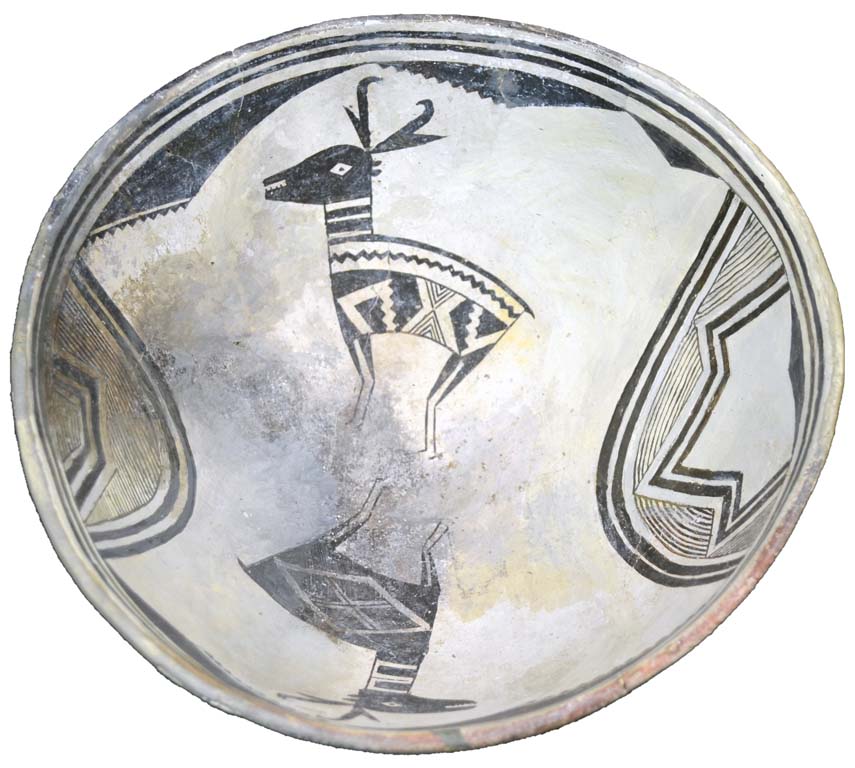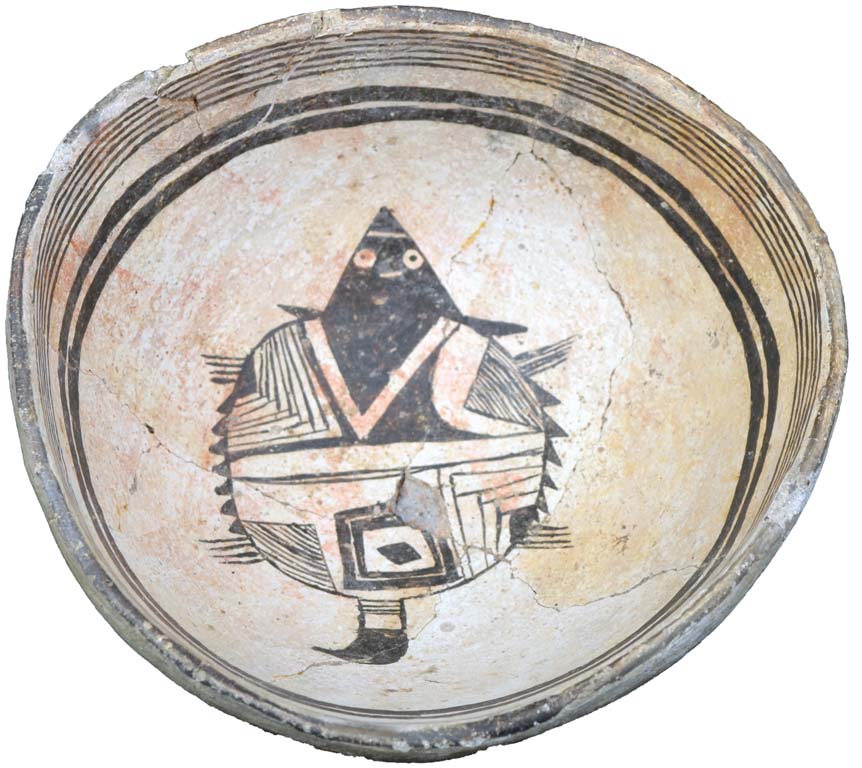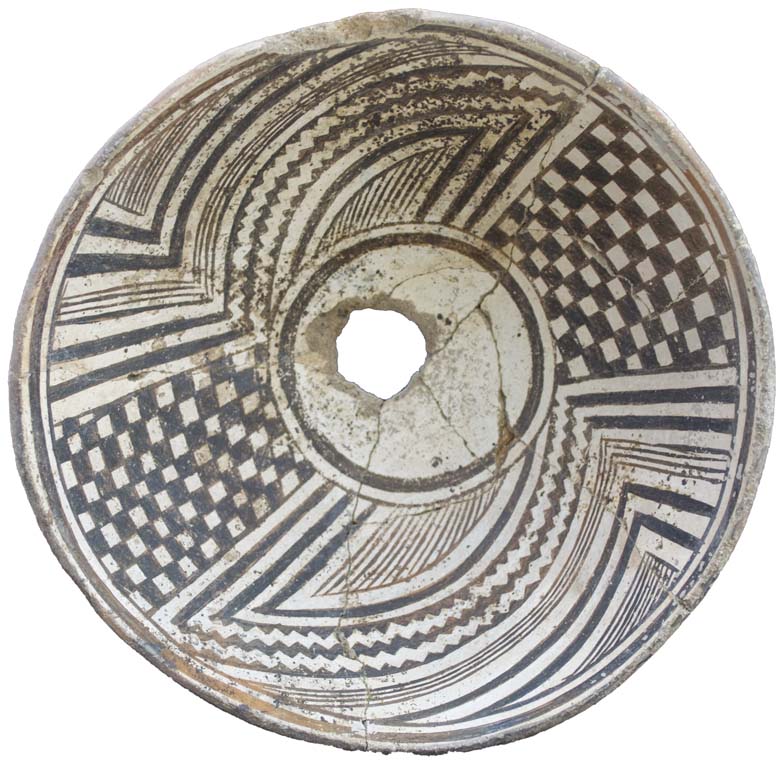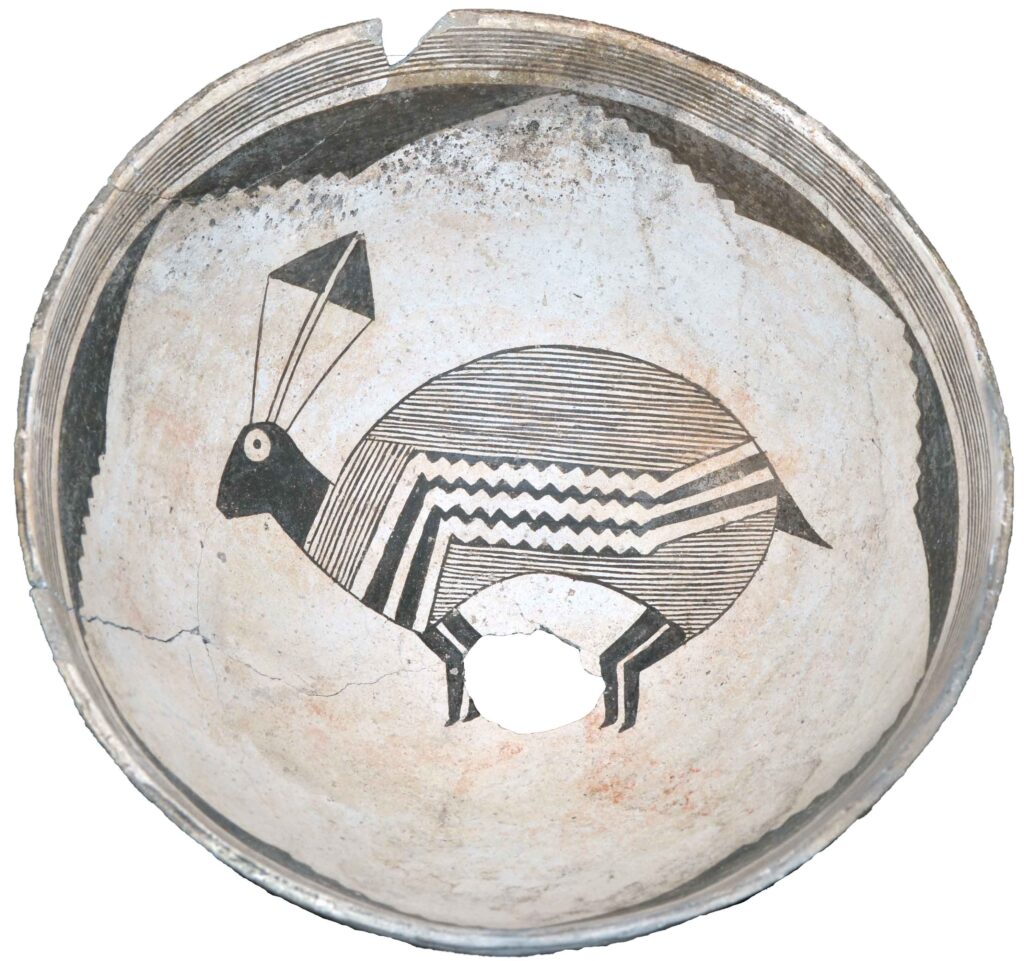Marc Geyer | @geyerma | August 18, 2023 1:00PM
The Southwest has many mysteries. One is the abrupt disappearance of the Mimbres artistic style pottery around A.D. 1100-1150. The beginning of what could be termed “artistic precision” in the designs of Mimbres pottery around A.D. 900 increased in complexity and detail that culminated in decorations that included animal and human figures set in and with elaborate geometric designs typically on the interior of bowls. What changed in the Mimbres area of Southwestern New Mexico? The following represent some potential factors leading to the demise of the Mimbres artistic pottery style.
Environmental Factors:
- One of the primary factors that might have contributed to the disappearance of the Mimbres artistic pottery style was environmental change. The Southwestern region of North America experienced fluctuations in climate and environmental conditions during the period when the Mimbres culture thrived. These changes could have impacted the availability of resources, such as water and arable land, affecting the Mimbres people’s agricultural practices and overall way of life.
Droughts and changes in weather patterns may have led to crop failures and food shortages, necessitating adjustments in their daily routines and reducing the time available for artistic pursuits like pottery-making. As the environment became more challenging, the focus of the Mimbres people may have shifted from artistic endeavors to survival and adaptation.
Societal Changes:
- The Mimbres society might have undergone significant changes that influenced the decline of the artistic pottery style. Population pressures, shifts in social dynamics, or the emergence of new political structures could have altered the community’s priorities and resources. Increased competition for resources and the need to concentrate efforts on other aspects of daily life may have limited the time and resources available for the intricate and time-consuming process of creating elaborate pottery designs.
Additionally, the shift in social dynamics may have led to changes in cultural beliefs and traditions, affecting the importance placed on artistic expressions like pottery-making.
Economic Transformations:
- The economic landscape of the Mimbres people could have undergone transformations that impacted their artistic practices. Trade networks, which were essential for acquiring valuable materials like turquoise and shell, may have changed or diminished during this period. Without access to these resources, the Mimbres people may have faced limitations in their artistic pursuits and had to focus on more practical endeavors.
Moreover, changes in the economy and social organization could have altered the demand for and appreciation of artistic pottery within the Mimbres community. As economic priorities shifted, the production and distribution of artistic pottery may have declined.
Migration and Cultural Interaction:
- Migration and cultural interaction with neighboring tribes and cultures might have influenced the decline of the Mimbres artistic pottery style. The movement of people and ideas across regions could have led to the adoption of new artistic styles and practices, shifting the focus away from the traditional Mimbres pottery.
As cultures interacted and merged, artistic influences and preferences might have blended, resulting in a gradual decline of the unique Mimbres artistic pottery style.
Sociopolitical Factors:
- Sociopolitical factors could have played a role in the disappearance of the Mimbres artistic pottery style. Conflicts, territorial disputes, or changes in leadership may have disrupted the stability and continuity of artistic traditions within the Mimbres society.
Changes in power dynamics and sociopolitical structures could have altered the patronage and support for artistic endeavors, leading to a decline in the production of intricate pottery.
Environmental Degradation and Resource Depletion:
- The intensive pottery-making practices of the Mimbres people, including firing pottery in kilns, might have led to environmental degradation and resource depletion. Over time, the extraction of clay and other materials for pottery-making could have exhausted local resources.
Additionally, the practice of clearing forests for firing kilns could have contributed to deforestation, negatively impacting the local ecosystem and further influencing the availability of resources for pottery production.
Despite the disappearance of the Mimbres artistic pottery style, the legacy of these exceptional ceramics endures in the form of archaeological discoveries, curated collections in museums, and private collections. The unique beauty and cultural significance of Mimbres pottery continue to captivate scholars, art enthusiasts, private collectors, and the wider public, offering valuable insights into the rich artistic heritage and cultural practices of the Mimbres people in Southwestern New Mexico. As we study and celebrate the Mimbres artistic pottery style, we honor the ingenuity and creativity of these ancient artists and gain a deeper appreciation for the complexities of their history and the mysteries surrounding their artistic decline.






